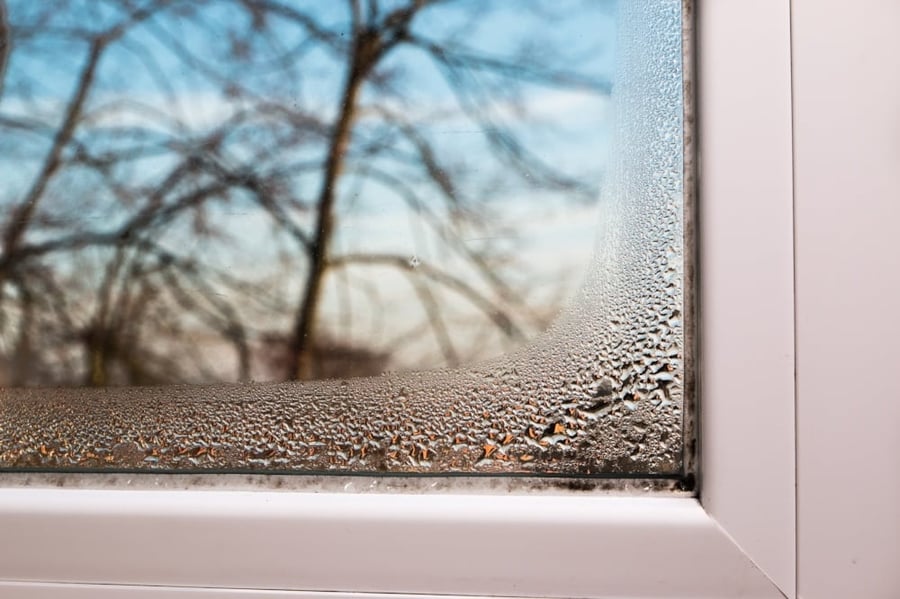Measuring Moisture: Answers to 3 Top Thermo-Hygrometer FAQs

 Here on the Delmhorst blog, we frequently talk about the benefits of moisture meters, those devices that can take a moisture content reading in different building materials.
Here on the Delmhorst blog, we frequently talk about the benefits of moisture meters, those devices that can take a moisture content reading in different building materials.
While immensely useful for testing building materials, you often need a reading of the environmental conditions as well. For this task, you need a thermo-hygrometer.
Although many are familiar with moisture meters for home inspectors, contractors, and the like, many people don’t know as much about thermo-hygrometers.
To help you gain a better understanding of the usefulness of a thermo-hygrometer, here are a few answers to some frequently-asked thermo-hygrometer questions:
1: What Makes Thermo-Hygrometers Different from Moisture Meters?
Thermo-hygrometers are very different from both pin and pinless moisture meters.
Whereas pin and pinless moisture meters are designed to take a %MC reading of the moisture in a specific building material, thermo-hygrometers measure the temperature and relative humidity (RH) in the air for a given area.
2: What Are Some of the Common Issues with Thermo-Hygrometers?
There are a few challenges to overcome when using thermo-hygrometers, just like there would be with any other piece of testing equipment. Common issues include:
-
Accounting for Temperature. When taking an RH reading for a given area in a structure, the ambient temperature can affect the accuracy of the reading. The higher the humidity, the more the temperature will affect the reading. For example, if the RH in a room is 80% at 33 °C, (91.4 °C), the a change of 1 °C (1.8 °F) would alter the RH reading by as much as four percent.
-
Sensor Tolerance. Every thermo-hygrometer has a built-in margin of error, or “sensor tolerance.” This means that, for any given reading, there may be a difference between the reading given and the actual RH of the area. For example, if the sensor tolerance value of a hygrometer is 3%, and the RH of a room is 33%, then the device may return a sensor reading between 30% and 36%.
-
Care and Maintenance. RH sensor materials will degrade over time as they are exposed to contaminants in the air. This will eventually cause the thermo-hygrometer to lose accuracy over time. This sensor drift can compromise reading results, which means the sensor material will eventually have to be replaced.
Despite these issues, thermo-hygrometers are still invaluable tools for building inspectors, flooring contractors, and restoration specialists.
3: Why Would I Need a Thermo-Hygrometer?
Considering that thermo-hygrometers don’t allow for a specific reading of %MC like moisture meter readings would, why would you need one of these devices?
Common uses for thermo-hygrometers include:
-
Moisture Intrusion Detection. Since thermo-hygrometers get a reading of the relative humidity in the air over a large area, such as in a room of a building, they are useful for detecting signs of moisture intrusion. If a room has an abnormally high RH, there is a good chance there are building materials in the room that have been moisture-compromised. This allows you to narrow your search for a moisture intrusion source to the room(s) with a high RH.
-
Checking RH for Acclimating Wood. When acclimating flooring or structural lumber for use in a building, it’s important to make sure that the wood is properly acclimated. Since wood is a hygroscopic material, it will absorb or bleed moisture until it reaches equilibrium with the surrounding air. Knowing the RH of the air in a structure gives you a better idea of how close a sample of wood is to reaching equilibrium moisture content (EMC).
-
Checking Concrete Slabs. Contractors working with concrete use thermo-hygrometers with in-situ probes to check the moisture conditions deep in the slab. This is critical to following the ASTM F-2170-11 standard, and lets contractors know when a slab is ready to be built on.
Properly cared for and maintained, thermo-hygrometers are incredibly useful tools for any specialist who has to account for ambient moisture conditions on the job.
Subscribe to Our Blog
Post Related

Wood Flooring
Moisture Content
Flooring
moisture meters
moisture meter manufacturer
thermo-hygrometer
Thermo-Hygrometers
Flooring Issues & How Moisture Meters Can Solve Them

